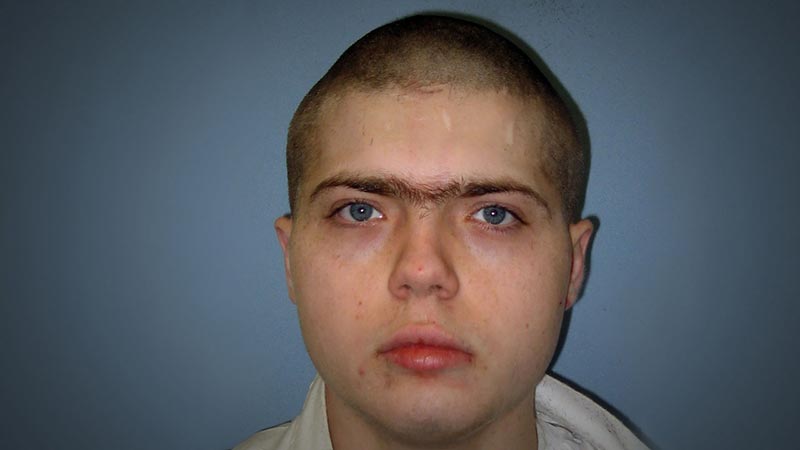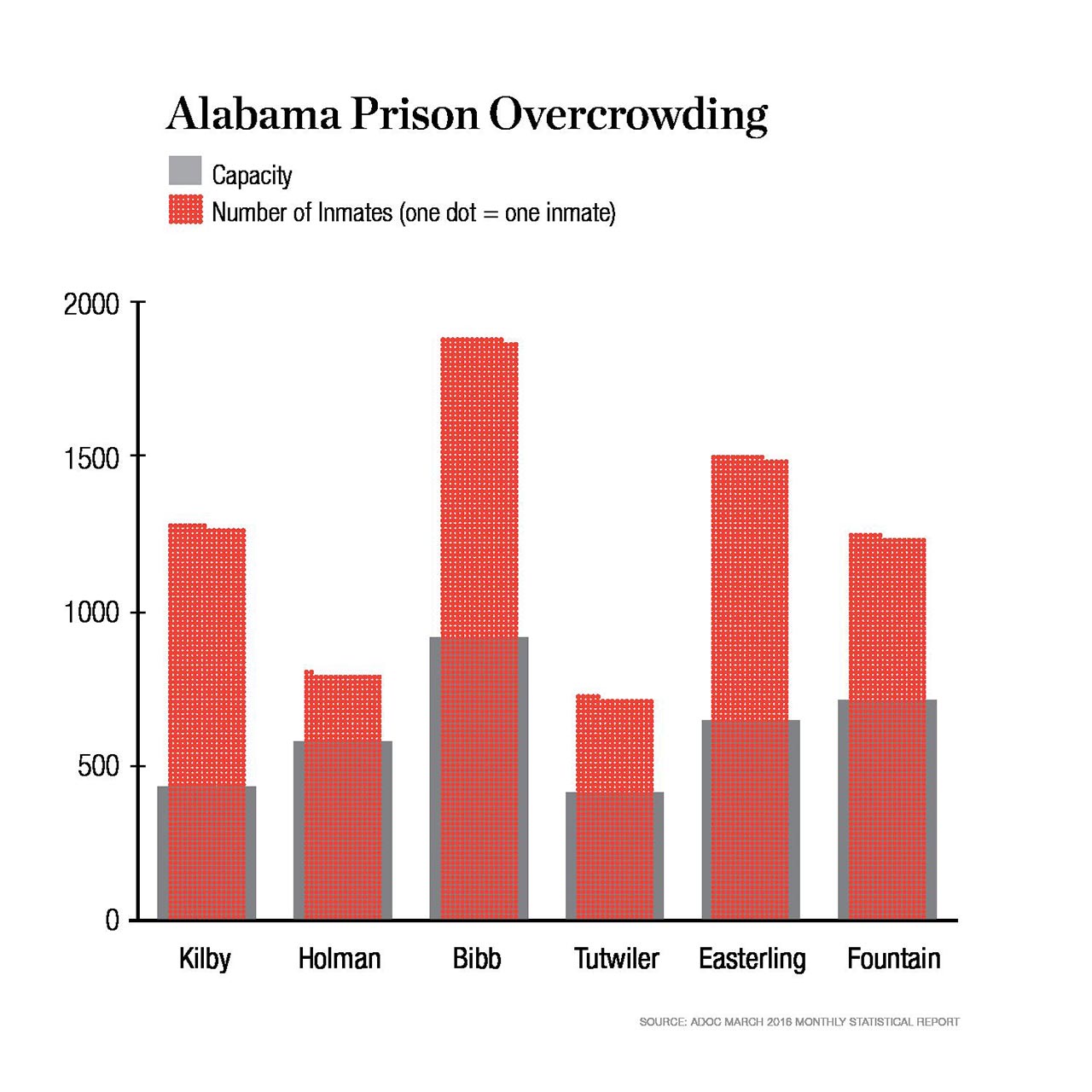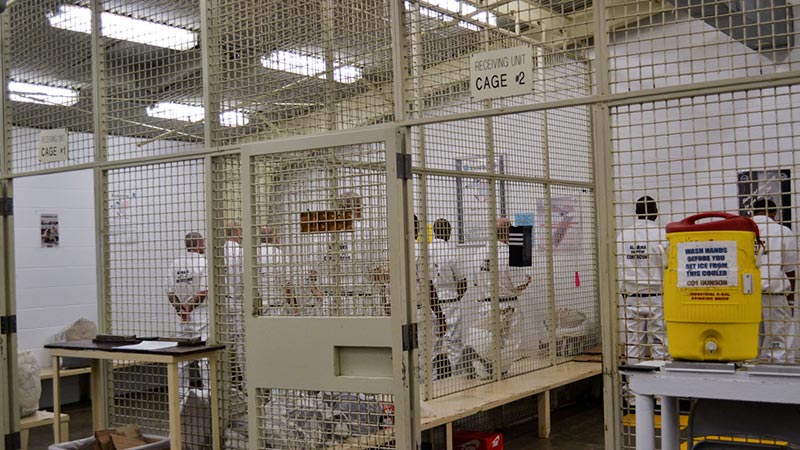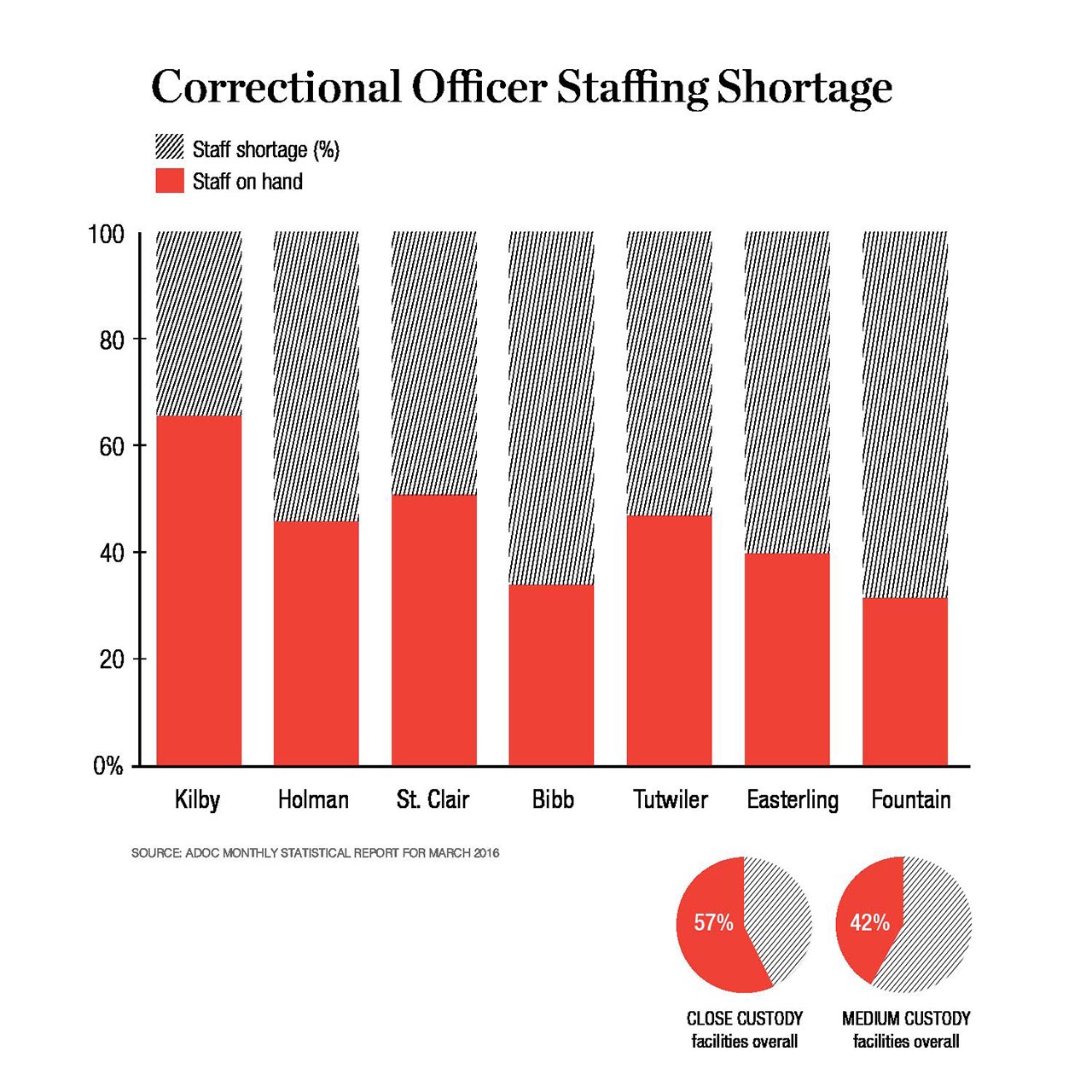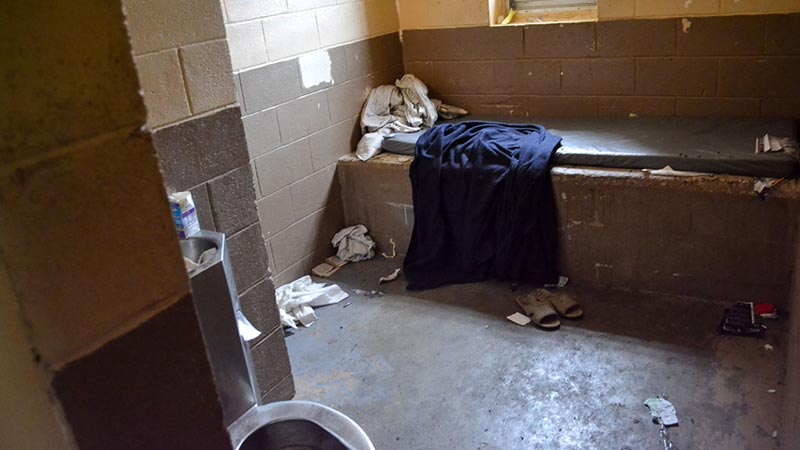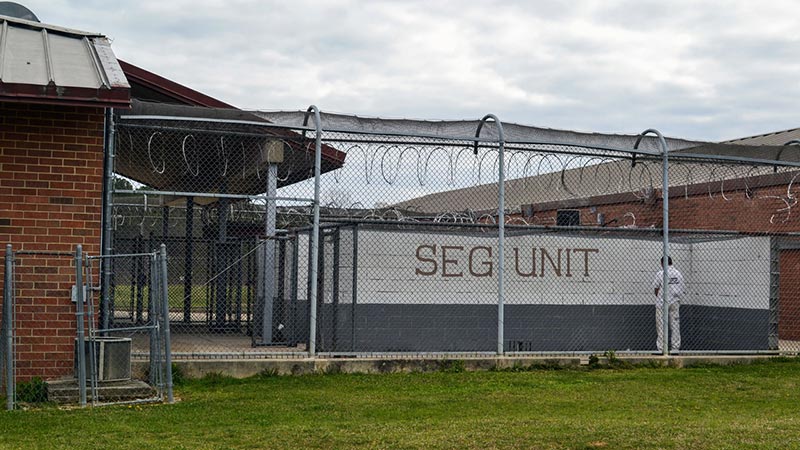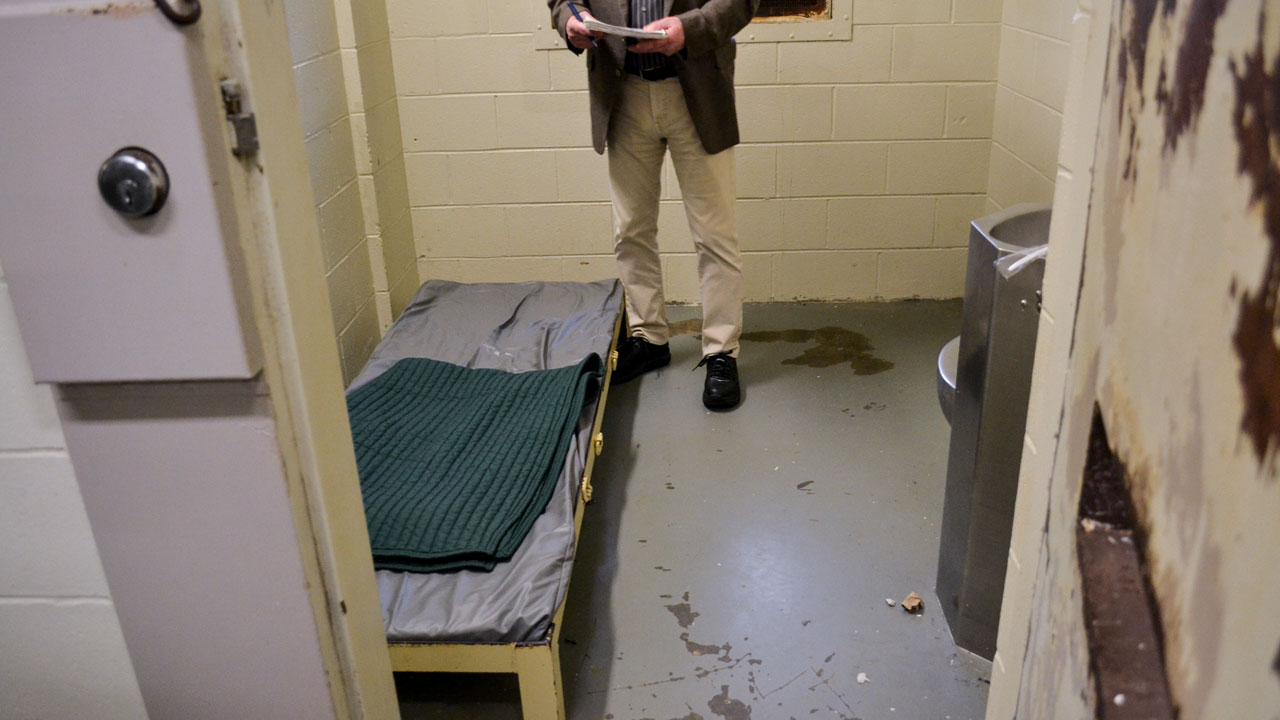SPLC trial over mental health treatment in Alabama prisons concludes
After hearing two months of testimony, a federal judge will now decide whether Alabama’s troubled prison system violates the rights of prisoners by failing to provide adequate mental health care.
U.S. District Judge Myron Thompson is expected to rule in the SPLC case within the next few months, following a trial that began Dec. 5 and ended last week.
The SPLC presented witnesses and evidence depicting a cash-strapped, understaffed prison system whose failure to ensure proper mental health care amounts to “deliberate indifference” – a violation of the U.S. Constitution’s ban on cruel and unusual punishment.
As the trial progressed, a picture emerged of an Alabama Department of Corrections (ADOC) that rarely connects prisoners with their mental health caregivers – a system that cannot provide them with a safe environment and the therapy they need, or even identify those who most need help. The Department is quick to give involuntary medication orders, fatally slow to respond to suicidal thoughts and keen on saving money when it can.
Incarcerated witnesses told the judge about horrific conditions, especially in the spaces designated for mental health treatment. Expert witnesses recounted hearing inmates plead with them from their cells during official visits. “This place is killing me,” a 24-year-old prisoner named Jamie Wallace had said, “please get me out of here.”
“No one in Alabama’s prisons was sentenced to this kind of suffering,” said Maria Morris, SPLC senior staff attorney and lead counsel in the case. “To be locked away in isolation and forgotten by the prison system, just because of a mental illness, is a punishment that fits no crime.”
Prison officials, for their part, had little to say in their defense. Officials with MHM Correctional Services, the for-profit company hired by ADOC to provide mental health care, pinned the blame on a lack of resources, a difficulty in recruiting staff, and the thin ranks of security officers that leave the prisons unsafe for their employees.
The trial in Montgomery, Alabama, was part of a broader suit filed by the SPLC in 2014 against ADOC, which operates some of nation’s most overcrowded and understaffed prisons. A second trial, expected later this year, will focus on the SPLC’s allegations that the state also routinely ignores the medical needs of prisoners.
The trial began with Wallace showing the judge the scars on his arm and neck. They were the telltale signs of the wounds he had opened and re-opened on his body with razors and improvised blades, including the sharpened top of a Skoal can. Wallace, who suffered from bipolar disorder and schizophrenia, testified that when he was held in isolation he simply had nothing to do “but pace the floor.”
Ten days after his testimony, Wallace was found dead in his cell from suicide.
He had hanged himself, fresh off a stay in a suicide watch cell. The jarring turn of events gave new urgency to a trial that showed the system’s failures begin the moment prisoners enter the system.
Dr. Kathryn Burns, chief psychiatrist for the Ohio Department of Corrections, testified that ADOC fails to identify many prisoners with mental problems when they arrive.
In most prison systems, Burns said, 20 to 30 percent of prisoners need mental health services. In Alabama, just 14 percent are listed as needing care. That likely means many people aren’t even eligible for therapy, she said.
In one case, shown in a 2015 email between top ADOC officials, a prisoner who tried to kill himself had attempted once before, in 2014. Despite two attempts, the prisoner was not on the mental health caseload and received no more care than a prisoner without any mental illness at all.
“It’s difficult to call this a system, because it misses people at intake and people can’t join,” Burns said. “This is the worst system I’ve ever seen.” Because of that initial failure, she testified, the system “falls apart at the front door.”
After intake, Burns and other experts testified, the treatment gets no better. Even those who are identified as needing mental health services are cared for by underqualified mental health staff. The psychotherapy they receive, if any, is rarely more than a superficial check-in. And the Department struggles to properly respond to inmates with mental health problems that cause harmful behavior.
Burns interviewed 77 prisoners and visited nine of the 15 Alabama prison facilities. In testimony that became especially important after Jamie Wallace’s death, she discussed the substantial risk of serious harm for suicidal prisoners who are observed only at 15-minute intervals rather than being observed continuously or at staggered intervals.
Burns also testified that during her tours of Alabama prisons, she saw isolation units where cell windows were covered with metal, letting in only “pinpricks of sunlight.” Some were occupied by prisoners who had been there for months and who would not respond when spoken to.
The dangers of segregation – essentially solitary confinement – were also highlighted by Dr. Robert Hunter, who is in charge of psychiatric services for the prison system.
Hunter, the chief psychiatrist and medical director for MHM, testified that a stint in segregation – or the prospect of facing one – is a common factor among inmates who have died by suicide in Alabama’s prisons.
“Any inmate in [segregation] is at risk of deterioration,” Hunter said. “I think, overall, the concept of segregation in corrections should be re-thought … it’s generally recognized that prolonged segregation is deleterious to a person’s mental health.”
When Hunter met with prison officials and MHM employees in October 2015 to discuss the rising number of suicides in Alabama prisons, solitary confinement was part of the discussion. Prison officials, however, never followed up and made no substantive policy changes. Hunter testified that more than a dozen prisoners had killed themselves between October 2015 and December 2016.
A prisoner identified in the trial as M.P. was held in segregation for six years. He testified about living in a “single-man cell” with an area smaller than a parking space. The cell had no central air during Alabama’s brutally hot summers. M.P. said he struggled with suicidal thoughts and survived several suicide attempts. In segregation, he testified, he heard voices in his head saying, “It’s not worth it. Give up.”
Trial testimony also revealed that prisoners receiving treatment don’t necessarily find themselves in a better situation. Dr. Craig Haney, a nationally renowned prison psychology expert who toured some of Alabama’s prisons, told the court he found that cells used to “treat” severely mentally ill prisoners – therapeutic cells – are indistinguishable from the harshest solitary confinement cells.
In fact, Haney said, the prison system so blurs the line between a therapeutic cell and a solitary confinement cell that it “conflates punishment and treatment in terms of the harshness of the conditions.” Overall, he told the court, the risk to mentally ill prisoners is “substantial and the harm is serious.”
Eldon Vail, the former head of Washington state’s prisons, testified that Alabama prisons are simply getting it wrong when it comes to dealing with prisoners who harm themselves. The proper response is to intervene with therapy, not discipline. Placing an inmate in segregation for self-harm will exacerbate the behavior, Vail said.
Many of the system’s failures – to provide proper psychotherapy, medication and a more appropriate response to self-harm – are rooted in the severe understaffing of Alabama’s prisons. Vail said the lack of ADOC security staff and overcrowding in general puts more stress on mental health patients and leads to inadequate treatment.
“If you don’t have enough staff to do the job, some things have to go,” he said.
As prison system officials and others took the witness stand, ADOC’s failure to take responsibility became a common theme.
When Anna Davis-Walker, one of MHM’s top managers in the state, was asked who takes responsibility for implementing plans to correct problems, she dodged the question.
A frustrated Judge Thompson questioned Davis-Walker himself.
“Where does the buck stop?” he asked.
“It doesn’t stop with anyone,” she answered.
Ruth Naglich, ADOC’s associate commissioner for health services, blamed her failure to correct problems at the feet of the Alabama Legislature, citing funding cuts and staffing shortages.
Attorneys for the state tried to divert attention from the failures by suggesting the possibility that new prison construction would resolve the problems. The prospect was raised as Gov. Robert Bentley has once again proposed a plan to build four massive prisons at an ultimate cost to taxpayers of $1.5 billion.
Corrections Commissioner Jeff Dunn, however, admitted under questioning by Judge Thompson that the construction plan did not specifically address the provision of mental health care.
When Vail, the former Washington state prisons chief, was on the stand, a defense attorney asked whether “modern design” and “advances in the art” of correctional design could allow fewer correctional officers to watch a larger number of inmates.
Vail’s response: No, it would not.
The exchange led the judge to question the relevance of the issue or new prison construction to the allegations in the suit. “We’re talking about buildings that don’t exist in Alabama?” Thompson asked before the defense quickly moved on.
Throughout the trial, Wallace’s death cast a long shadow.
In the wake of his suicide, the SPLC filed an emergency motion to force the ADOC to take immediate action to protect suicidal prisoners. It described how other prisoners were at “substantial risk of profoundly irreparable harm.”
The motion, which sought a temporary restraining order or a preliminary injunction, asked the court to ensure that the state provides a “measure of basic compliance with Plaintiffs’ constitutional rights” that will “protect against immediate threat to human life.”
Lawyers from both sides worked to hammer out an agreement to protect the prisoners. The order, issued by the judge, was a 15-point plan mandating that the ADOC hire more staff, implement a “constant watch” system for suicidal inmates and report the number of people on suicide watch to the plaintiffs.
“I think we were all affected by the suicide of [Wallace],” said Dunn, the corrections commissioner. He told the court he was committed to implementing the interim plan.
The order provided a temporary fix – a plan to get the prison system through the next 60 days – but it was clear that a permanent solution would be needed.
Haney, the prison psychology expert, offered testimony during the last week of the trial that underscored the need. He repeatedly expressed disbelief as he recounted his visits to some of Alabama’s worst prison facilities.
“The conditions of the Holman [Correctional Facility] segregation unit are really difficult to capture in words,” he said. He described having to step over a puddle of urine in front of one cell and hearing “screaming, shouting … people yelling, ‘Please help me.’
“It was a shocking experience.”
At Donaldson Correctional Facility, Haney found therapeutic cells to be virtually identical to Alabama’s harshest solitary confinement cells.
It was there, he said, that he met Jamie Wallace.
“The level of desperation among the prisoners who were housed there, the physical conditions … were striking and surprising,” Haney said. “Certainly the level of desperation among the prisoners did not suggest that they were in a therapeutic environment.
“It suggested something quite the opposite.”

